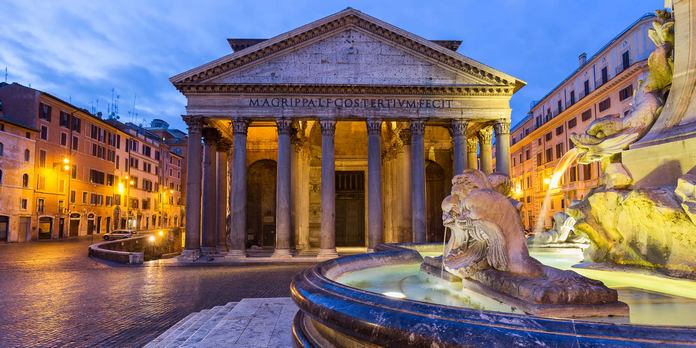1Ancient Origins

The Pantheon was originally built between 27 and 25 BCE by the Roman statesman and general Marcus Vipsanius Agrippa.

The Pantheon was originally built between 27 and 25 BCE by the Roman statesman and general Marcus Vipsanius Agrippa.